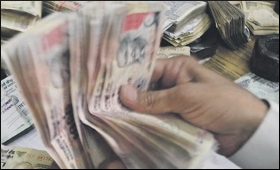|
|
|

|
Now's an excellent learning opportunity for Indian credit markets
|
|

|
|
| Top Stories |
 |
|
|
|
Taponeel Mukherjee | 06 May, 2019
News on Indian credit markets over the last few weeks provide us with
pointers that should help shape policy and business strategy. The
struggle to get bidders for Jet Airways and the tepid response from
investors towards Indias fledgeling municipal bond market point towards
the need for a better-structured credit market, especially as the nature
of businesses evolve even as the demand for credit rises to finance
consumption and infrastructure needs.
The lack of investor
interest in Jet Airways, driven in no small extent by a lack of clarity
around how the carrier will resolve its debt issues points towards the
need for better assessment of risk scenarios by lenders moving forward.
Reassessing risk scenarios are essential as businesses such as Jet
Airways that have relatively fewer tangible assets utilise the debt
markets. From a lender's perspective, not finding a prospective buyer
for Jet Airways implies potentially sending it to the bankruptcy court.
But for businesses that do not have a significant quantity of fixed
assets, the value realisation from bankruptcy courts can be meagre.
The
fact that Jet Airways has a lower value realisation in the case of
bankruptcy begs the question as to what changes do lenders need to
implement in their credit models to deal with such companies going
forward. As the economy evolves, businesses that borrow will have
balance sheets that perhaps hold more intangible assets. In the case of
Jet Airways, unlike say a steel business, a majority of its fixed
assets, i.e. planes are leased, and therefore bankruptcy proceedings can
realise limited value. The pertinent point is that lenders must do a
better job in pricing these risks moving forward as lending to companies
with more and more intangible assets picks up.
In other
relevant news, the lukewarm investor interest in the municipal bond
market in India is one that merits attention. Given the scale of urban
infrastructure required, municipal bonds could be a critical financial
instrument to plug the financing gap. However, given the current
challenges and the stage of evolution of the bond market, a vibrant and
functional municipal bond market will require significant groundwork.
Clarity
around municipal funding, or more specifically, the payment mechanism
of the municipal bond, will be vital to attracting investor interest.
Answering the fundamental questions of "who pays" and "are they willing
to pay consistently" will alleviate a majority of the concerns people
have with municipal bonds. Ensuring an adequate payment mechanism will
require a lot of work to help cities plan and budget financing
efficiently.
Depth of the benchmark government bond curve will
also be vital towards increasing investor appetite for municipal bonds
since investors will utilise the government bond curve as a benchmark.
The eventual aim is to create a market and an ecosystem for municipal
bonds that encapsulates market makers, price transparency,
risk-benchmarks and mechanisms for redressal of problems.
The
issues around both Jet Airways bankruptcy and the municipal bond market
point towards critical areas that credit markets in India must resolve
through innovation in capital markets. Given the dynamic nature of
business, lending standards and procedures that worked for companies in
the more traditional industries may not be well suited for new age
businesses.
The question isn't merely about how much to lend,
but also is one about security design whereby the question arises as to
whether collateralised debt instruments allow lenders to truly hedge
their risks in a world where asset-light models abound?
As
credit markets get more sophisticated, more attention will have to be
paid to security design above and beyond what standard debt instruments
have to offer. Security design implies bespoke instruments designed to
reflect both the cash flow risk of businesses and the ability for
recovery in the case of default.
Dynamic pricing of credit risk
through secondary markets as is the case with equity will be essential
to ensure that both credit charges reflect the appropriate risk
undertaken by the lender.
Additionally, credit instruments
utilised to lend to businesses must be able to better factor in the
inability of the company to service debt as the credit financing
capacity of the business declines, and not as a jump to default event.
Essentially, credit instruments have to be designed to reflect their
seniority in the cash flow waterfall. Better security design will allow
lenders better recovery of money since rarely is a credit default a
sudden event. As mentioned earlier, the ability of the market to factor
in the declining credit profile of a company will ensure that debt
burdens for low-quality credit businesses aren't ramped up at the wrong
time.
Astute utilisation of credit markets and effective credit
security design will be a fundamental driving force for boosting the
Indian economy. The government, businesses and individuals all stand to
benefit immensely from robust credit markets. Current trends provide an
excellent learning opportunity.
|
|
|
| |
|
|
|
|
|
|
|
|
|
|
|
|
|
|
| |
| Customs Exchange Rates |
| Currency |
Import |
Export |
US Dollar
|
₹84.00
|
₹82.25 |
UK Pound
|
₹104.65
|
₹108.10 |
Euro
|
₹92.50
|
₹89.35 |
| Japanese
Yen |
₹56.10 |
₹54.40 |
| As on 25 Jul, 2025 |
|
|
| Daily Poll |
 |
 |
| Who do you think will benefit more from the India - UK FTA in the long run?
|
|
|
|
|
|
| Commented Stories |
 |
|
|
|
|
|
| |
|